Nijo-jo Castle is located on the west side of where Nijo Street meets Horikawa Street in Kyoto. It was built in 1603 by Tokugawa Ieyasu (1542-1616), the first shogun of the Edo shogunate. Its purpose was to serve as a protector of the Kyoto Imperial Palace where the emperor lived and as a lodging place for the shogun when he visited Kyoto.
Although it is a castle, it is different from other castles in that its main function was to make the shogun’s authority known rather than to act as a fortress during battles. Therefore, the gates and palaces are adorned with luxurious decorations.
Let’s time travel back to when Nijo-jo Castle witnessed the birth and demise of the Edo shogunate for over 250 years.
① Higashi Ote-mon Gate (東大手門, East Gate)
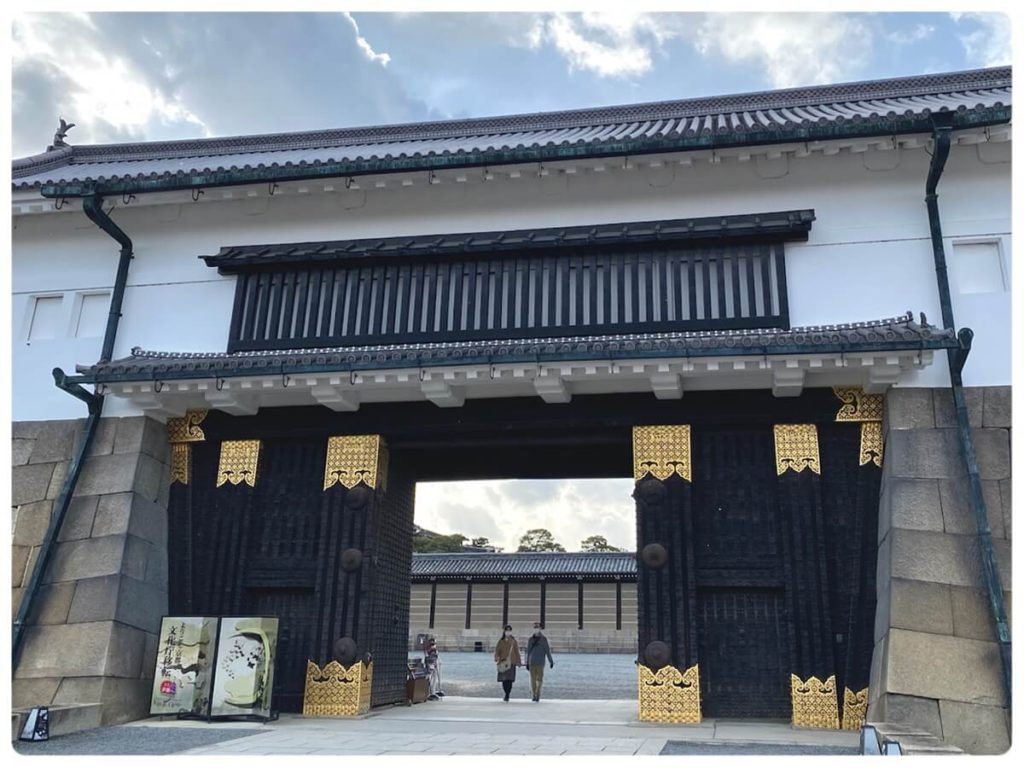
This is the main gate of Nijo-jo Castle, and visitors enter from here. When it was originally built, it had a two-story gate like the present one. However, in 1626, to honor Emperor Gomizunoo’s visit, the gate was reconstructed into a single-story design so as not to look down upon the emperor from the second floor. In Japanese culture, overlooking someone from above could be considered a sign of disrespect. The current gate was rebuilt in 1662.
<Trivia 1: Where and why is there a bird?>
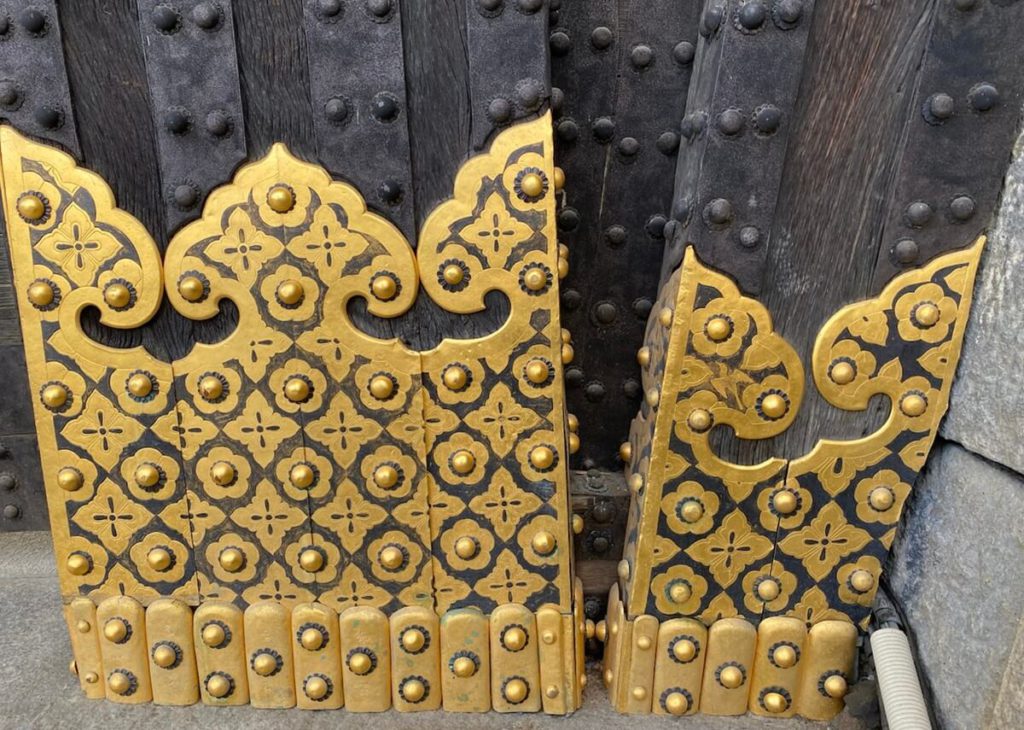
There is a hidden detail on the lower right side of the Gate: a golden plover bird inlay. It is said that the craftsman added it for fun. Can you spot it?
② Kara-mon Gate (唐門)

Enter the castle from the East Ote-mon Gate and turn left, and the Kara-mon Gate comes into view.
The gleaming exterior of this gate, with its gold leaf and carved work everywhere, gives visitors a strong impression of the prosperity of the Tokugawa family.
You will find exquisite sculptures of butterflies, cranes, pine trees, dragons, tigers, phoenixes, lions, etc. in rich colors on the gate.
③ Ninomaru-goten Palace (二の丸御殿)

Passing through the Kara-mon Gate, you will see the Ninomaru Palace, the main attraction of Nijo-jo Castle. The Ninomaru Palace consists of six buildings with 33 rooms and over 800 tatami mats. The interior is decorated with gorgeous ornaments such as fusuma (sliding door) paintings, wall paintings, ceiling paintings, and ranma (wooden carvings above sliding doors) of each room, and it is overwhelming.
Unfortunately, photography is not allowed inside the palace, so I cannot introduce it here, but I urge you to see it in person and enjoy the splendid and luxurious space befitting the shogun’s palace in the Edo period.
Here are some of the highlights of the Ninomaru Palace.
⭐︎Nightingale Floor
As you walk along the corridor, you can hear a chirping sound from your footsteps. This is the effect of the Nightingale Floor, a system that makes the floorboards creak when someone steps on them. It was thought to be a security feature to alert the residents of any intruders.
However, some recent studies have proposed that the sound is actually due to the aging of the floor over the centuries. Is it a deliberate design or an accidental result? I am still inclined to think the former.
⭐︎Restoration of Imperial Rule (大政奉還, Taisei-hokan)
As you follow the palace route, you will reach the Ohiroma (大広間) hall, the most ceremonial place. Here, in October 1867, Tokugawa Yoshinobu, the 15th shogun of the Edo Shogunate and the last shogun of Japan, gathered the feudal lords and declared his surrender of power to the Imperial Court. This historic event, called the Restoration of Imperial Rule, ended the Edo shogunate. You can witness the scene recreated with life-size dolls.
④ Ninomaru Garden (二の丸庭園)

It is a shoin-style garden with a pond at the center. The garden has three islands, four bridges, a waterfall in the northwest corner, and many rocks along the shore of the pond. The landscape is varied, beautiful, and magnificent.
<Trivia 2: what are they and why?>
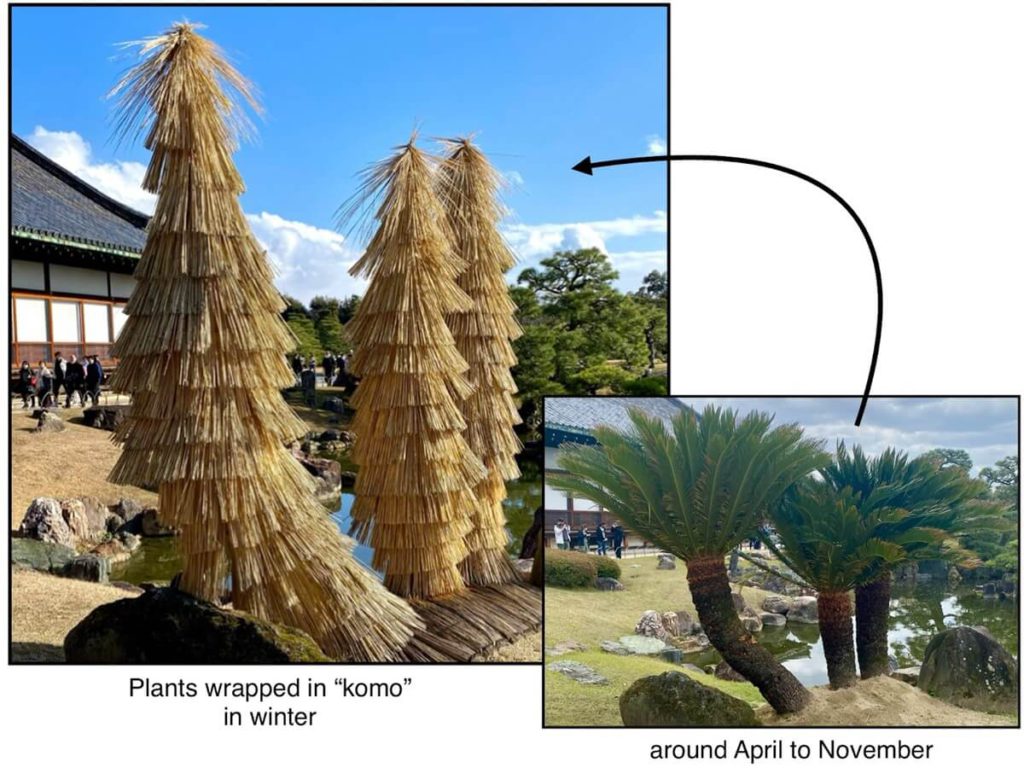
In this Japanese garden, the plant that stands out the most is the cycad, which brings to mind the southern islands. In winter, the cycad, which is susceptible to cold and native to the tropics, is wrapped in straw or “komo” to keep it warm. It has become a winter feature of Nijo-jo Castle.
At that time, the cycad was very rare and valuable, and it must have been a “symbol of power.” You will notice cycads not only in Nijo-jo Castle but also in Osaka-jo Castle, Hikone-jo Castle, and many other castles in Japan.
⑤ Honmaru-goten Palace (本丸御殿)
The building, protected by the inner moat, is a relocation of the Katsura Imperial Villa from within the Kyoto Imperial Palace in 1893. It is a historically valuable and precious structure that preserves the residential style of the imperial family during the Edo period.
Unfortunately, it is currently under repair work, so it is not open for viewing.

⑥ The base of the keep tower
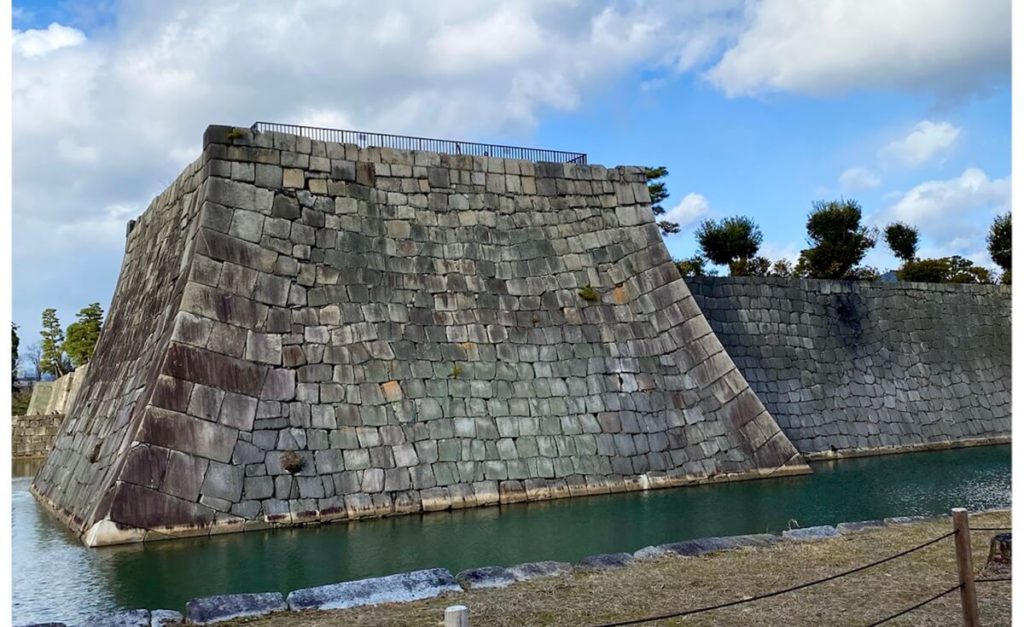
A five-story keep tower used to stand at the south-west corner of the Honmaru Palace. Destroyed by a lightning strike in 1750, the keep tower was never reconstructed. In times of peace, there was no power to oppose the Tokugawa family, and the keep was probably no longer needed.
Make sure to visit the base of the keep tower for a panoramic view of Kyoto. You can see the city nestled among mountains on three sides with the south open, and Mt. Hiei towering in the northeast.
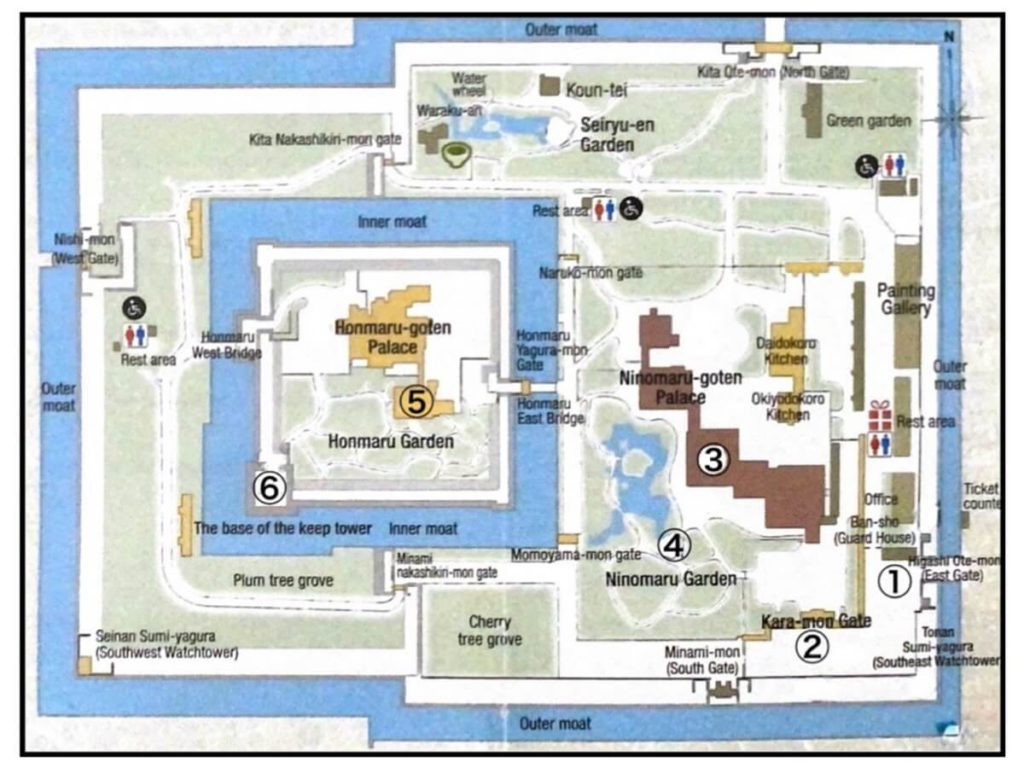
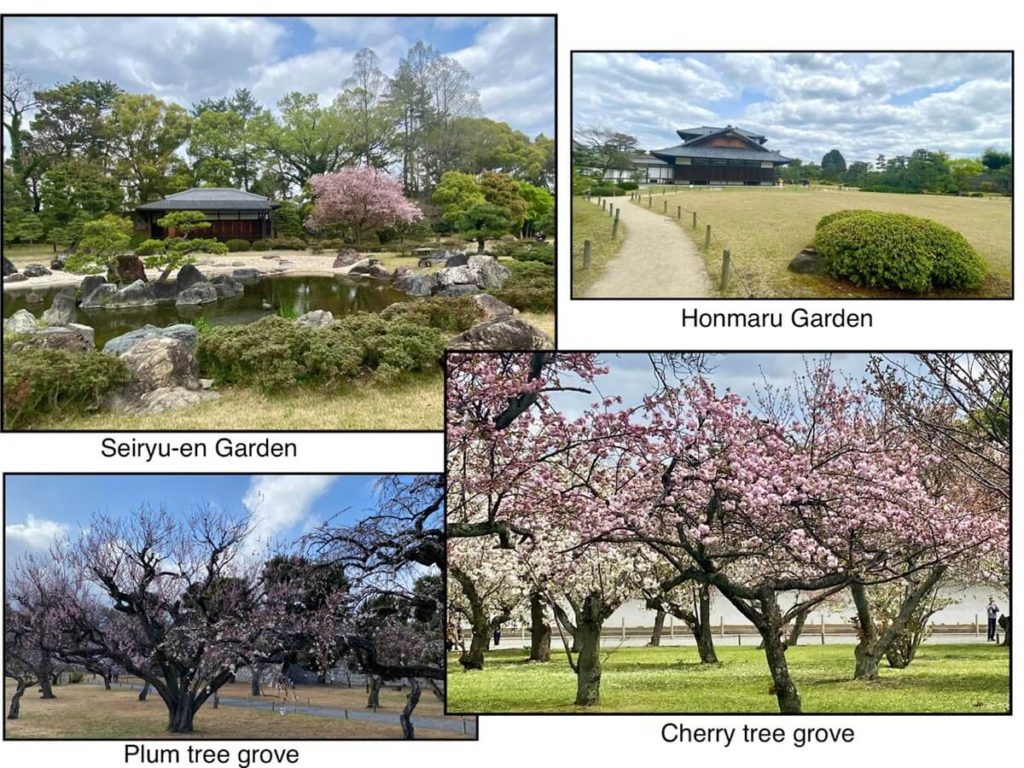
In addition to the above, Seiryu-en Garden, Cherry tree grove, Plum tree grove, etc. are where you can enjoy a variety of flowers and trees throughout the seasons. The Painting Gallery houses original fusuma paintings, allowing visitors to closely appreciate the paintings of the Ninomaru Palace.
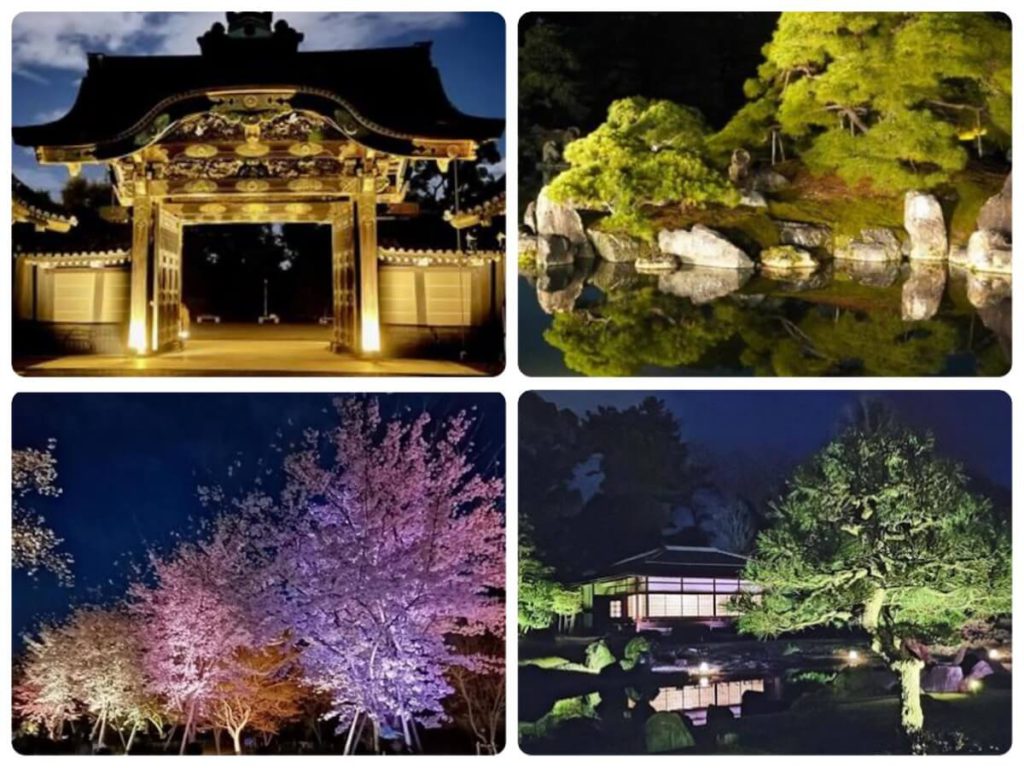
Nijo-jo Castle, a World Heritage site, not only has a rich history but also hosts modern events using technology, such as innovative light-ups and projection mapping, offering a fantastical and photogenic experience different from the usual.
Nijo-jo Castle is an indispensable place for travelers in Kyoto!
Born and raised in Kyoto. A private tutor and a volunteer tour guide in Kyoto. Love sewing, kimono remaking, traveling, cooking, gardening, playing the shamisen(三味線), making stained glass and grandparenting as well.



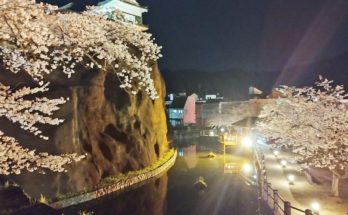

 HTJ has a YouTube page! Check it out
HTJ has a YouTube page! Check it out
Thank you for the very interesting information!
I’m thinking to visit there again for the first time in this several years!
Thank you for your comment, Masayo-san!
Nijo Castle is more of a museum than a castle, isn’t it!? It also has some spacious gardens with seasonal flowers. Let’s visit there again!
This was a fascinating overview of the history and details of Niko-jo Castle. Since I was lucky enough to tour the castle with you in September, it brought back memories. Thank you for sharing your knowledge through your blog, Rieko! Arigato gozaimasu.
Hi Cindy,
I am glad this article reminded you of our Nijo Castle tour again. I believe you caught a glimpse of Japanese history in the castle!
Thank you for your message!
Thank you Rieko! You always provide so much helpful information and beautiful photos for all perspective visitors to Kyoto!
And we can feel your true love and passion for this amazing city!
Hi Tatyana! I always try to write articles as if I’m guiding visitors. I hope this article will help tourists visiting Nijo Castle. Thank you for your comment!